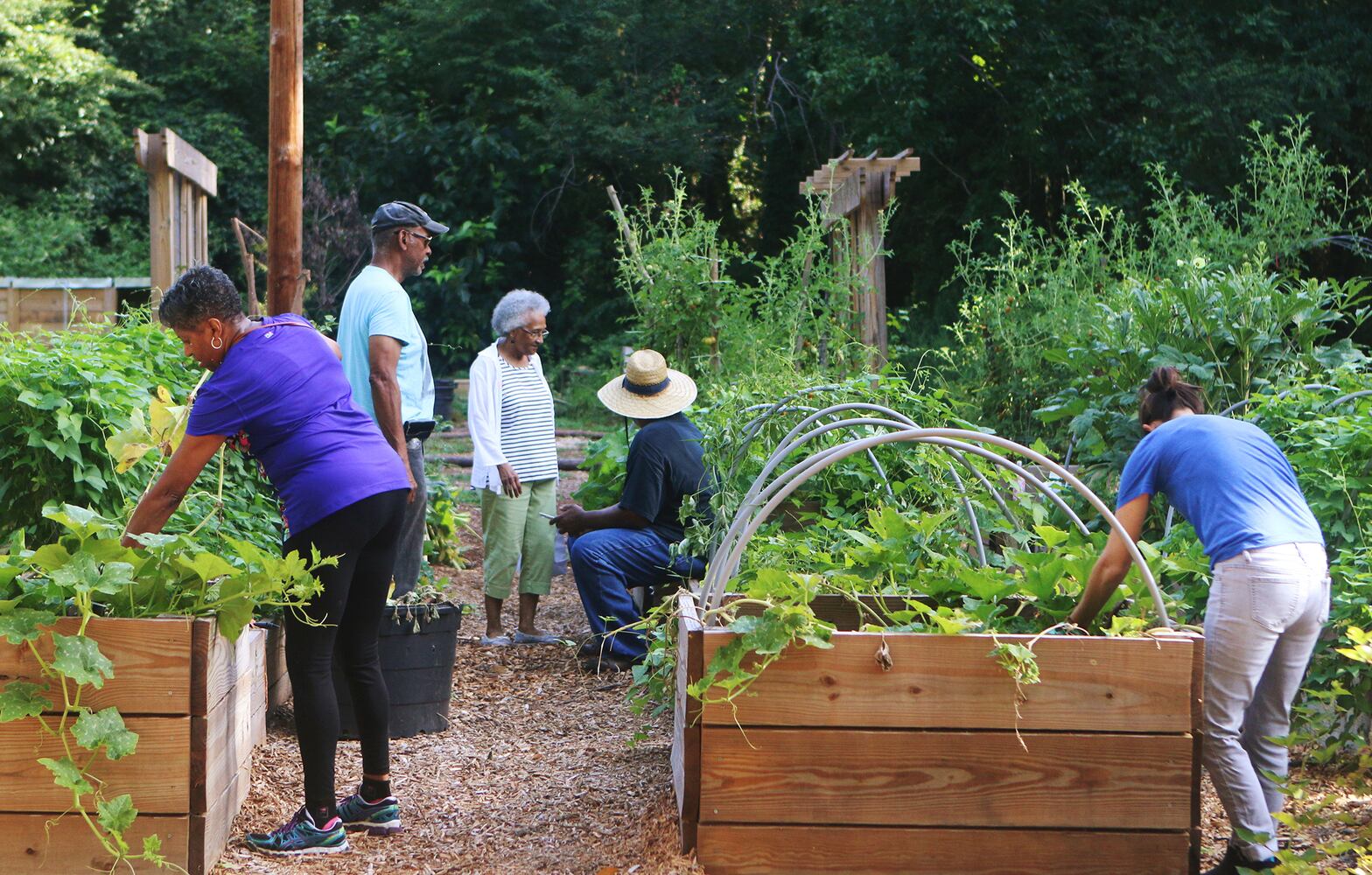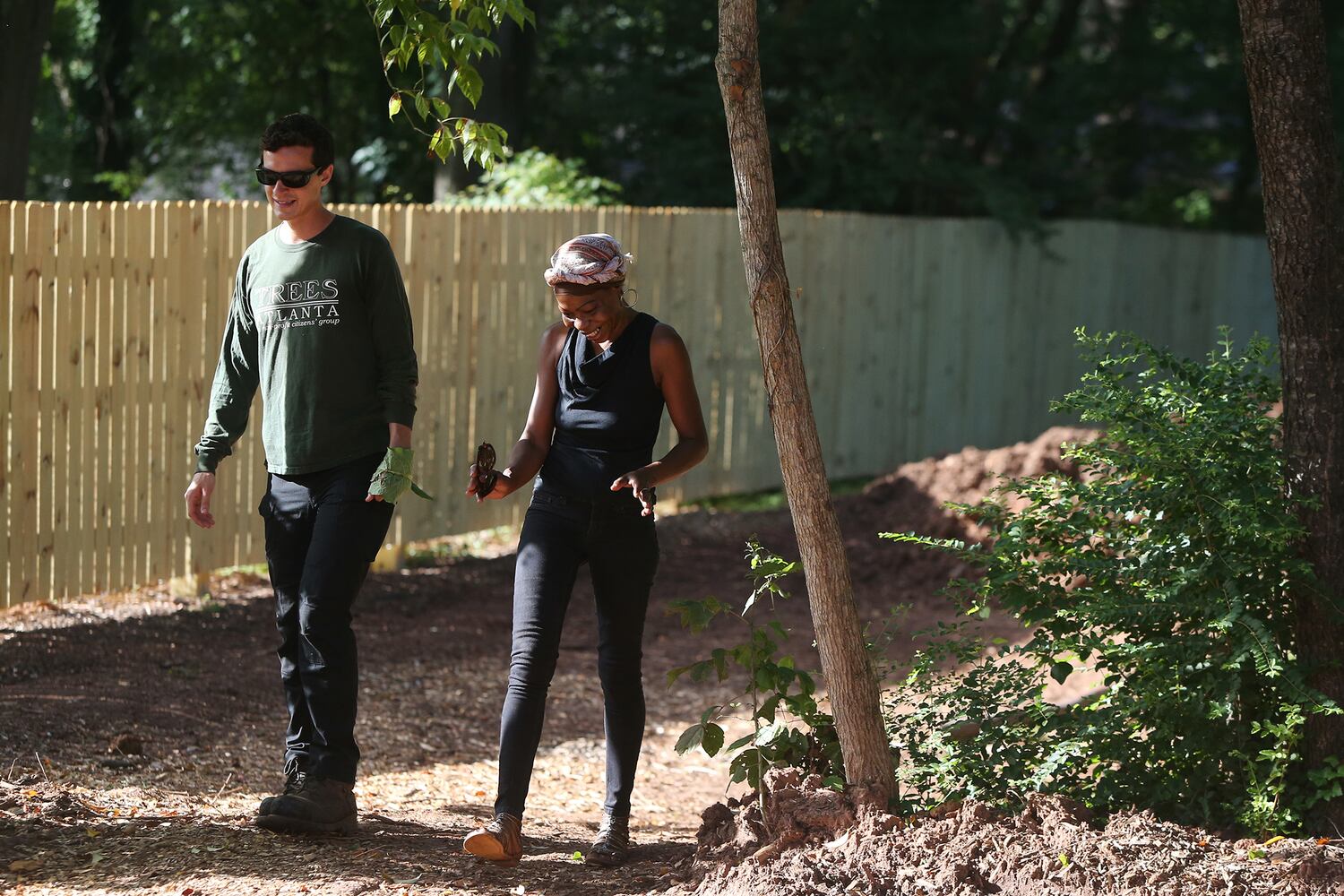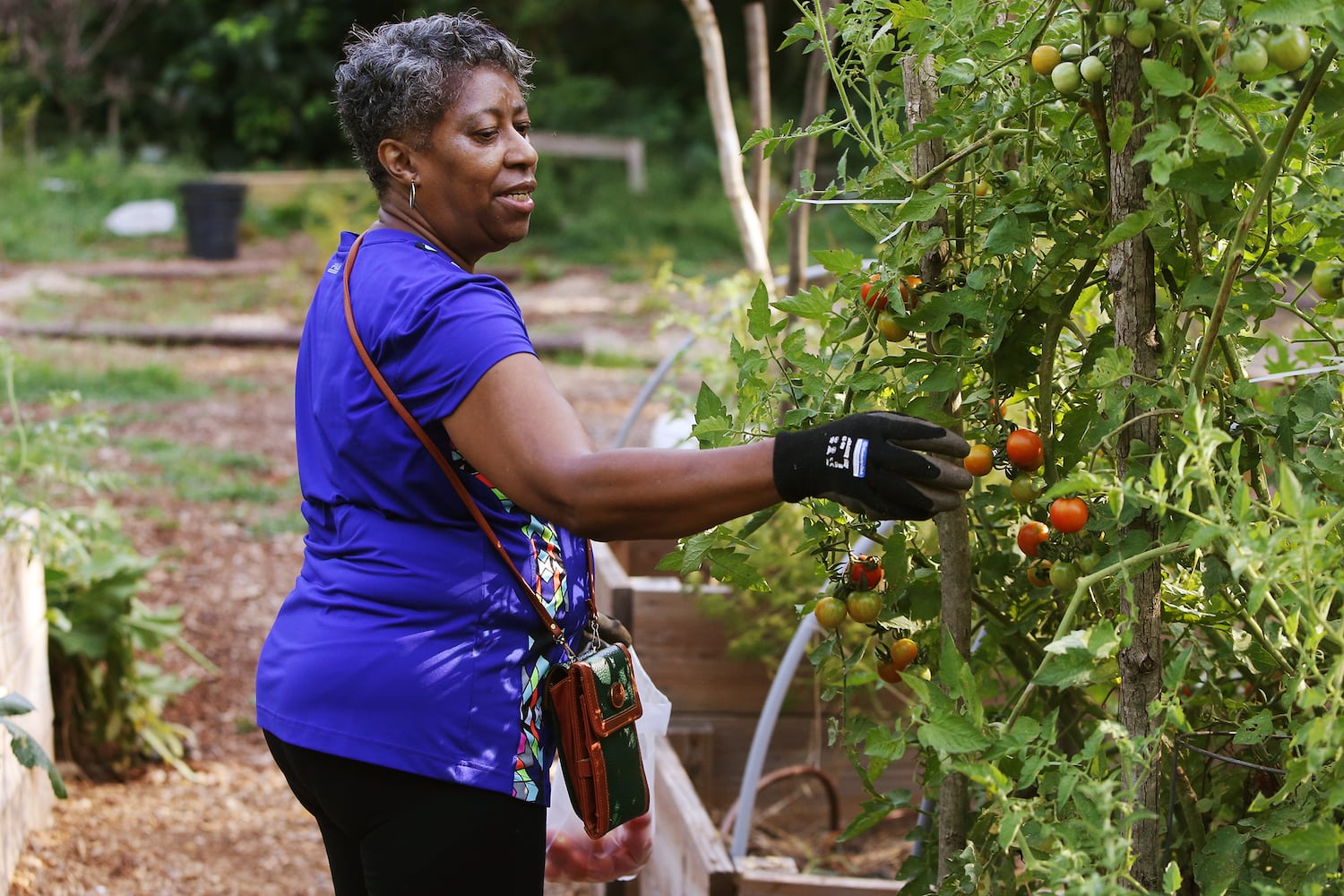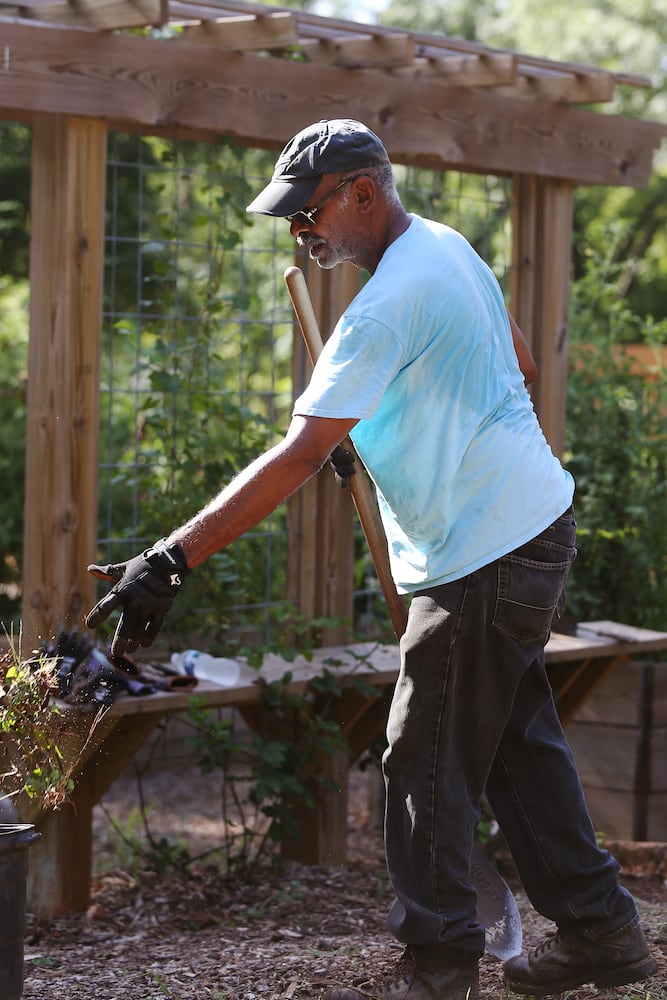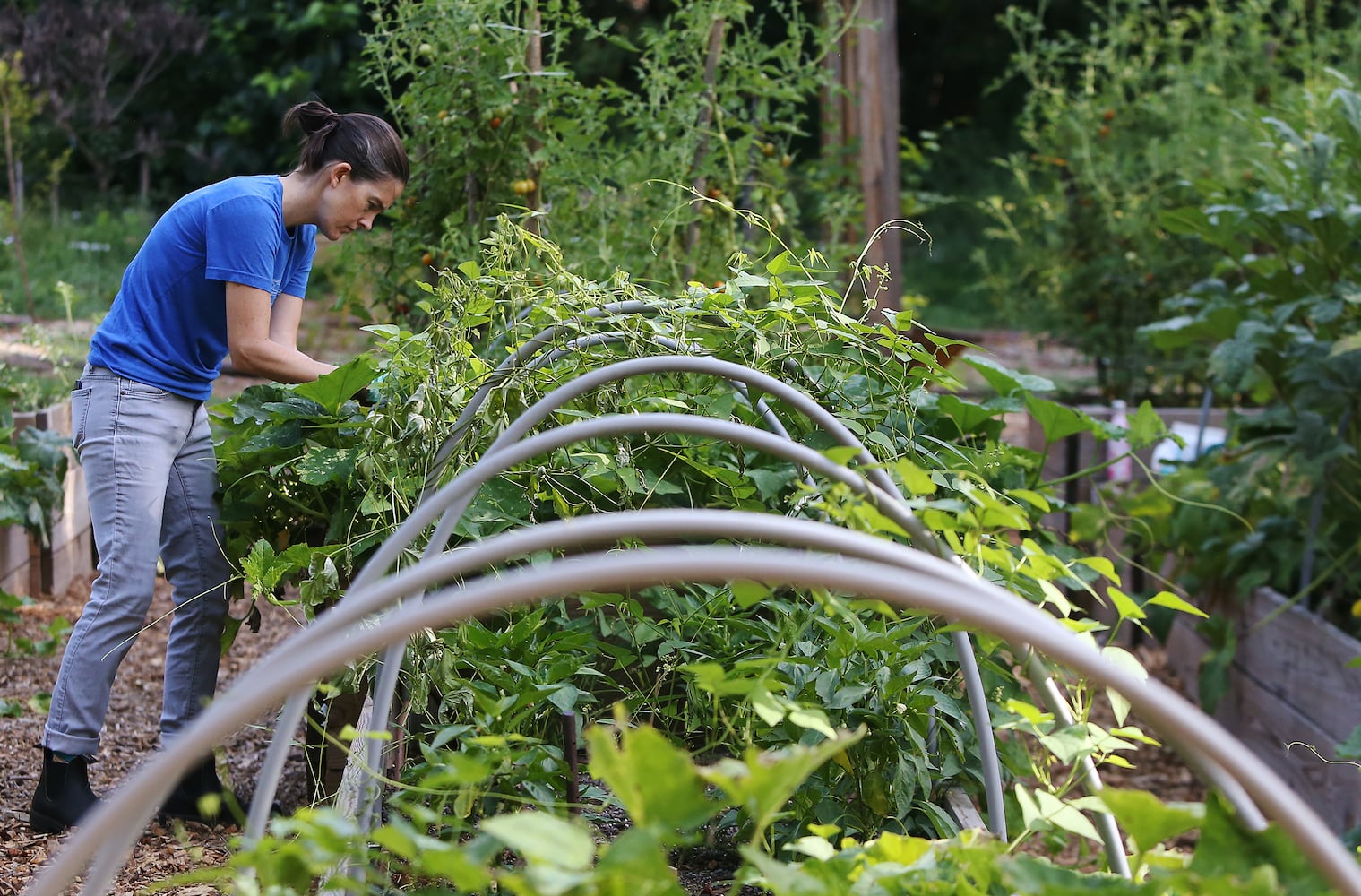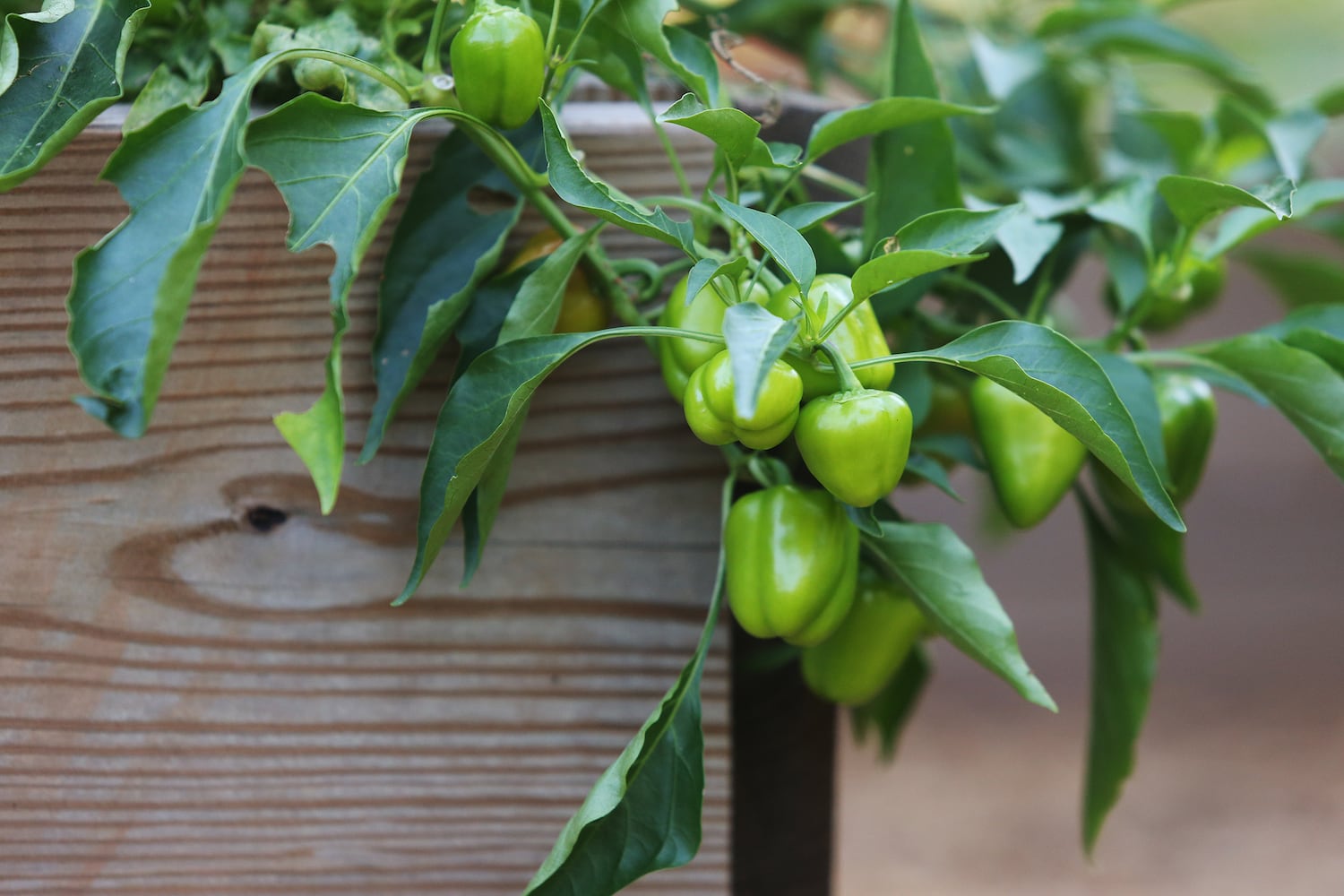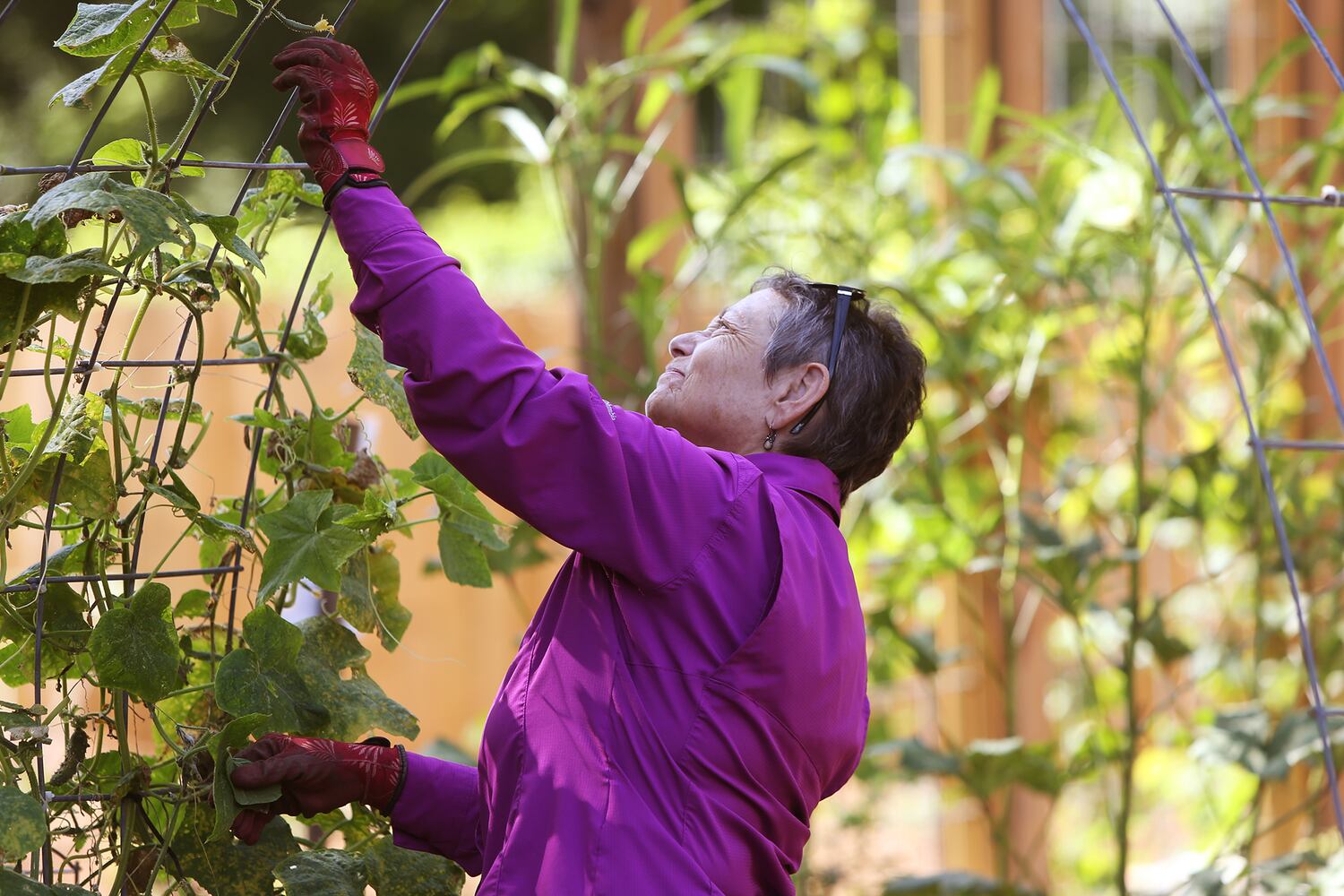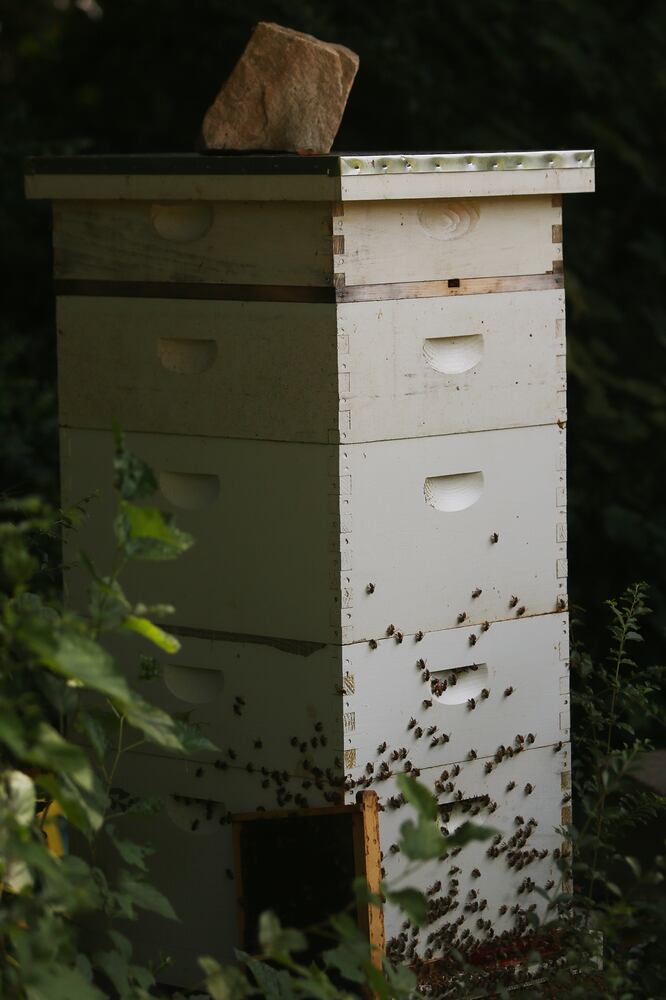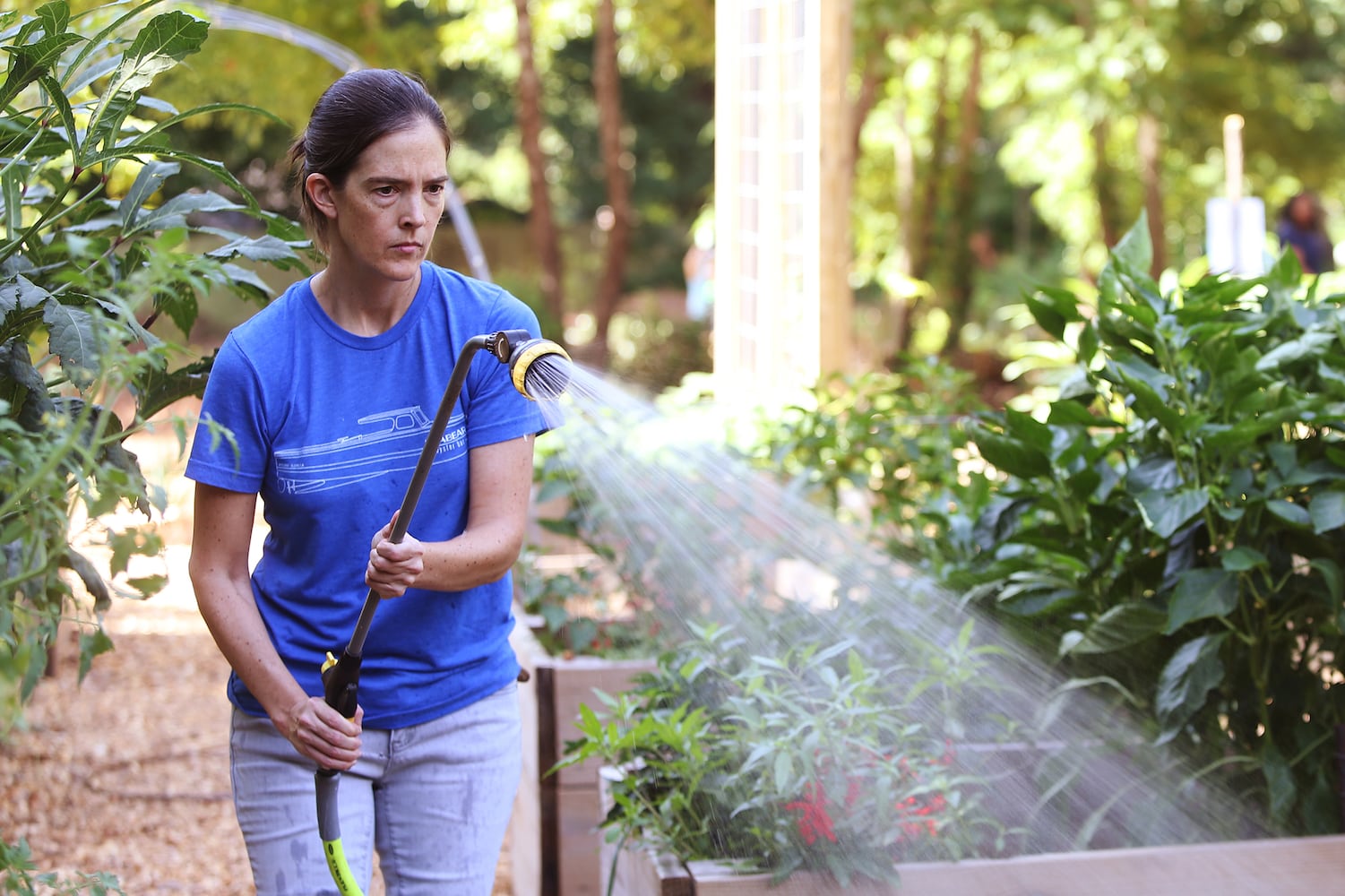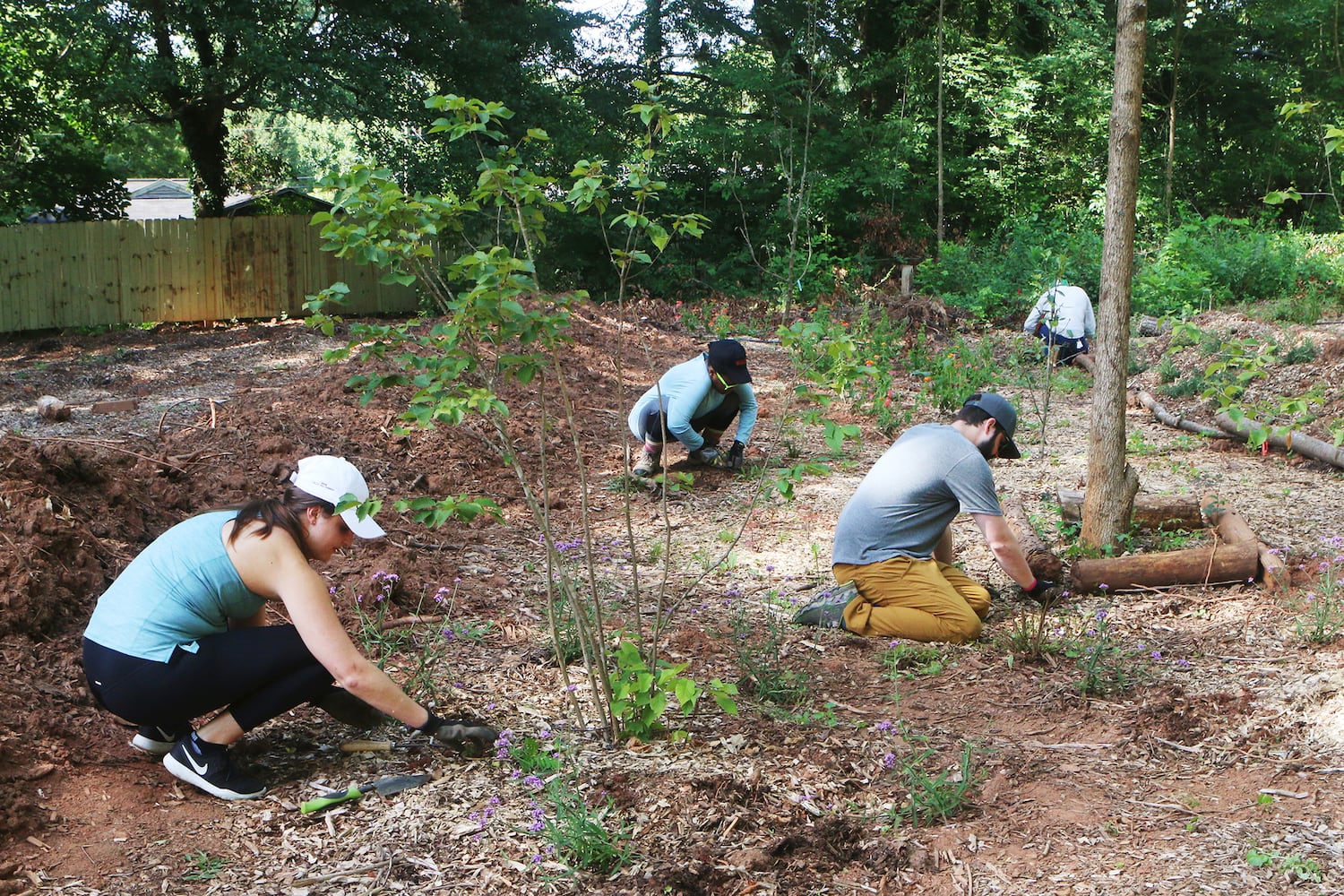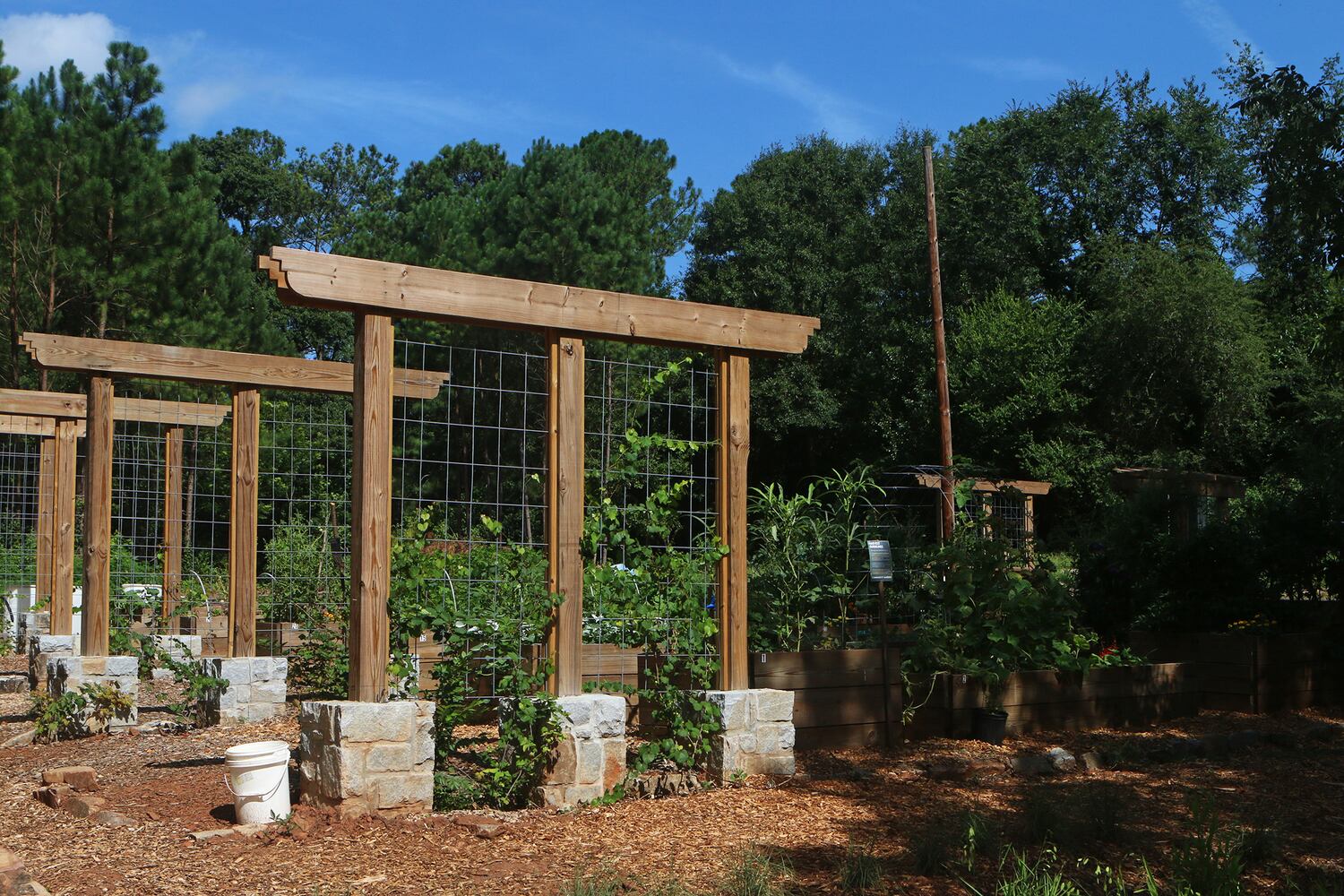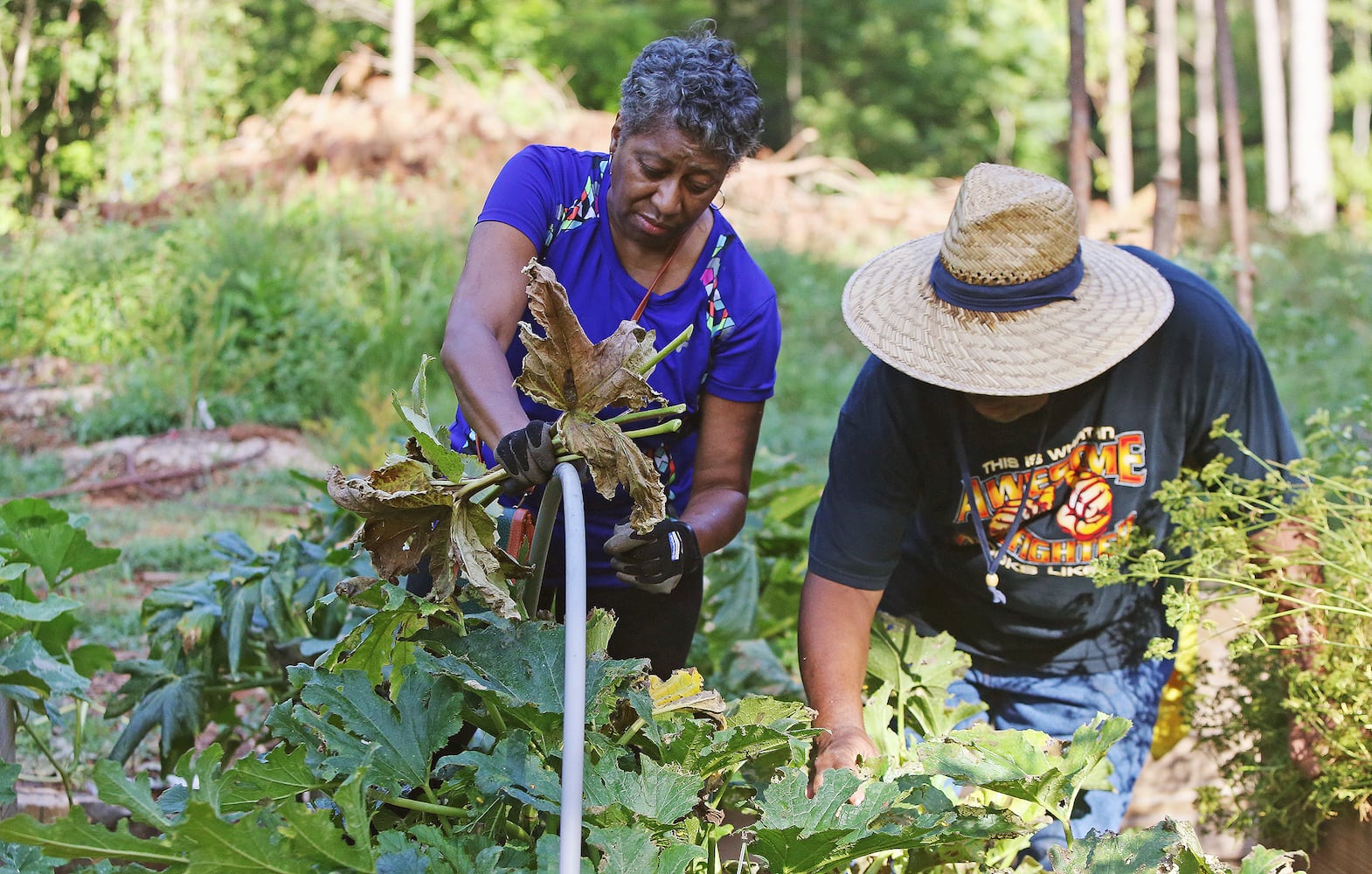Walk through the Urban Food Forest at Browns Mill and you’re surrounded by chili peppers, okra, and tomatoes growing out of the soil. The banana and pecan trees are slowly maturing alongside the mulberry and blueberry bushes. In a few months, the city streets surrounding the food forest will be lined with trees bearing pomegranates, plums, and cherries.
But on the outskirts, the forest's bordering communities offer no such sustenance. Lakewood and Browns Mill Park residents have limited options for fresh food: Smaller, independent grocery stores are scattered throughout, but the few larger grocery chains are at least three miles away from the neighborhoods, which sit in an area where the median income is $26,772.
The area is designated as a 'food desert' for the shortage of fresh food options, but the community hopes the 7.1-acre urban food forest — the first in Georgia and largest in the U.S. — will address that problem.
Residents are already volunteering at the forest and growing fresh crops to give to those living in the area. Food available for residents is left on a harvest table near the front of the forest. In the future, more food from the forest may be provided to churches and community groups for distribution to those in need.
A lifelong Browns Mill Park resident, Soisette Lumpkin, 67, is a part of the Friends of the Urban Food Forest at Browns Mill Park Community Collaborative, a group committed to maintaining the park and forest. Lumpkin said she hopes the food forest will bring more than just fresh crops to the area. She hopes it can revitalize the struggling neighborhood.
Lumpkin said the area has traditionally had high crime and failing schools, such as Thomasville Heights Elementary School six minutes away from the forest. The school is on the state's "turnaround-eligible" list — one of 13 schools on the list in the Atlanta Public School system.
“Our community is in an isolated side of the city of Atlanta,” Lumpkin said. “It has all of the detriments of failure. The food forest to me was going to be the pivotal change in our community.”
Community Effort
In May, the Atlanta City Council purchased the food forest, which had been in the works since 2016 when the land was first purchased by The Conservation Fund, a national environmental nonprofit that works to preserve millions of acres of land in the U.S. The U.S. Forest Service gave the city a grant to buy the food forest at the same time residents asked the city to create one, Atlanta's Urban Agriculture Director Mario Cambardella said.
“There was a number of local food advocates that had asked the city to look into ways in which parks in the city could celebrate more food-producing elements, especially fruit trees in parks,” he said.
The city asked for community input, but “when we saw the demographics and looked into who attended the meeting, we saw the neighborhoods were not represented at that meeting,” Cambardella said.
That’s when the city decided to hold its meetings closer to the community to gather input and create a development plan. Lumpkin saw the food forest as an opportunity to change the dynamic of the two communities.
“We saw the food forest not only providing food but becoming the mind, body, and soul of the community,” Lumpkin said. “If we had food that could entice people, we could wrap in everything they need from the social services perspective to make (residents) become holistic and self-sustained.”
The area has long been considered a food desert, or an area that does not have a grocery store within a mile of its neighborhood.
The roughly 4,000 residents in the southeast Atlanta communities have to travel three miles to get to an Aldi, which sits in a neighboring community. Two other grocery chains are scattered throughout the neighborhoods. The Carver Food Market, a smaller grocer created to address food needs in South Atlanta, is two miles away.
For residents who don’t have a vehicle, even those short trips can be a problem.
“I always ask, if you don’t have a vehicle in this community, what is your route to the nearest grocery store and how long will it take on public transportation?” Cambardella said. “How would that limit what you can take home?”
The food forest could be a remedy. The vast green space has fruit and nut trees, an herb garden with more than 100 fragrant, medicinal and edible herbs. Guests first arrive in a picnic area shaded by pecan trees before entering the community garden. In July, the garden was already filled with ripening bell and chili peppers, okra, tomatoes, squash, and cantaloupe.
Shrubs and vines that produce fruit line the walking trails, which take residents on a milelong hike through the forest to more fruit and nut trees — some of which won’t be fully grown for another three to five years. A stream leads to the South River and a memorial area for Ruby and Willie Morgan, who once owned the land and shared produce from their farm with the community.
Foraging Ahead
Besides the maturing garden, the development plan for the forest also calls for a greenhouse, an outdoor classroom area, and a well house.
Right now, the food forest is a combined volunteer effort of the Friends of the Urban Food Forest at Browns Mill Park Community Collaborative and Trees Atlanta, which has held school field trips at the site and has provided a food forest ranger who gives tours.
Food forest volunteers typically start their day at 8 a.m. harvesting and managing crops. Most volunteers work Mondays, Wednesdays, and Fridays, but for community garden manager Douglas Hardeman, it’s a fulltime job. Hardeman is generally at the garden 40 hours a week. This was especially the case when the garden’s water system was broken.
“I had to come out and water every two to three hours,” he said. The garden has since got its drip irrigation system back in place.
While the food forest is already producing, it takes time for crops to mature. But that hasn’t stopped residents from picking things before they’re ripe.
“We have some winter squash, they are huge, but they are not ripe until they turn an orangish color,” Hardeman said, “but people don’t know that.”
While anyone is free to pick the food, signage along the garden instructs residents to volunteer to access the food or pick produce from a harvest table near the food forest’s entrance. However, the signs are about a foot tall and aren’t easily visible to the public. And right now, no fence closes in the property from wanderers who are curious about the food forest.
Credit: Christina R. Matacotta
Credit: Christina R. Matacotta
“Once we started getting the news attention, we had people coming from all over the metro area,” Hardeman said.
While the park is already hosting herb and gardening classes, it also looking to expand its partnerships in the faith-based community to bring food to church members in need of fresh food.
“We see that there are those that have extreme poverty (and) not enough money to really buy the best of foods and unfortunately not enough food to feed their households,” Drake Barber said.
Barber is a senior pastor at Seventh Day Adventist Church and is hoping to partner with the forest to bring diverse foods to homes in the communities. “This supplement here will give (residents) something extra to have (and) the necessities to make sure that their children and those that live in their households are fed well and get better nutrition.”
— Data journalist Nick Thieme contributed to this report
Residents who want to volunteer in the community garden must email: brownsmillcommunitygarden@gmail.com. Volunteers are needed from 10 a.m. to noon Wednesdays and from 9 a.m. to noon every second Saturday.
Demographics near the Urban Food Forest at Browns Mill
The census tract that includes the food forest also includes Browns Mill Park and Lakewood
Population: 4,797
Median income per household: $26,772. (Atlanta’s is $51,700)
Per capita income near the food forest: $12,045 (Atlanta’s is $40,041)
Poverty: 28% of residents live in poverty
Credit: City of Atlanta and U.S. Census
About the Author
Keep Reading
The Latest
Featured
